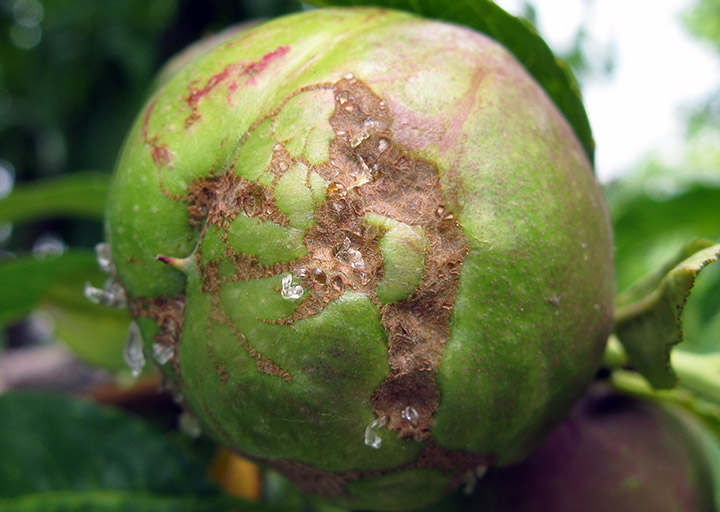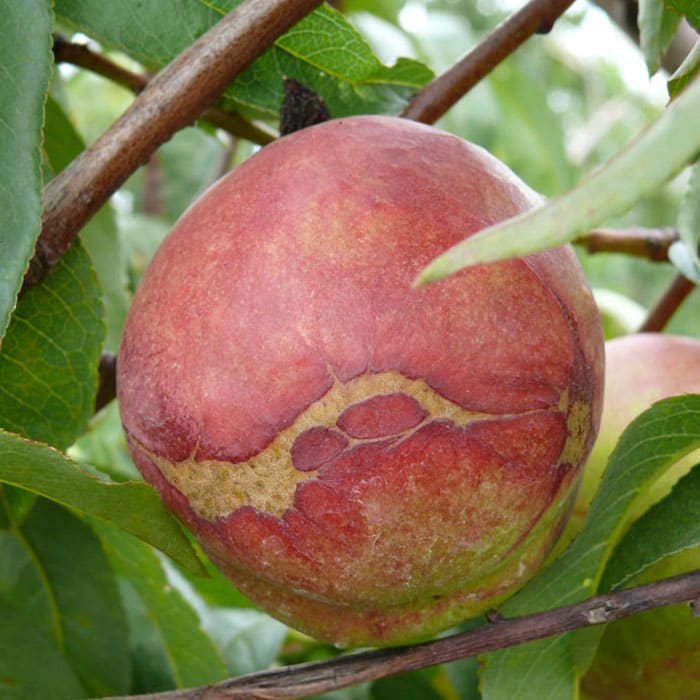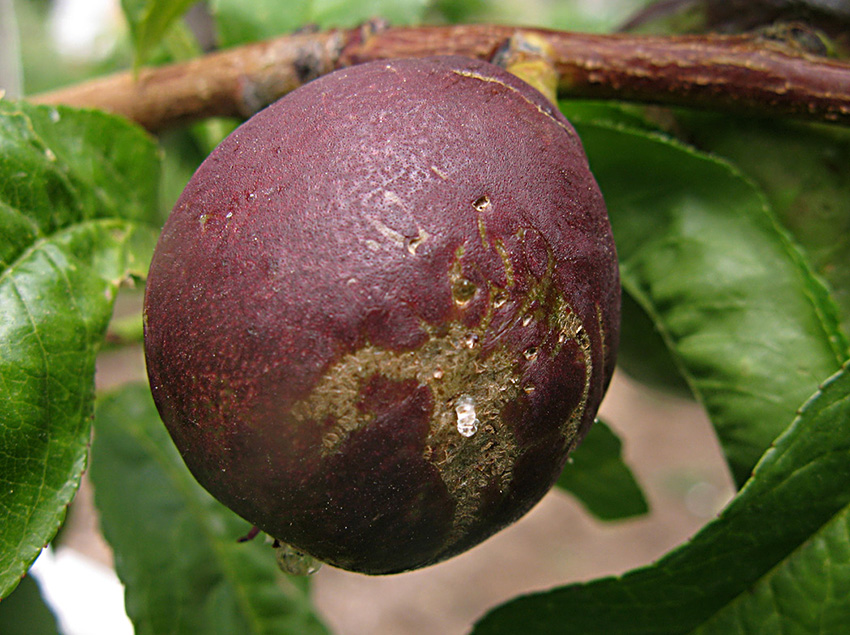
Trips
WHAT IS AND HOW TO ELIMINATE
Thrips
Thrips
Pathogen:
Insect
Type:
Risk to the plant:
HIGH



DESCRIPTION
WHO CAUSES IT?
Thrips are small insects belonging to the order Thysanoptera, with several species that affect peach, peach or nectarine. These insects go through several stages of development: egg, larva, pupa and adult. Females lay eggs in plant tissue, usually on leaves, shoots or flowers. After a few days, the eggs hatch and the larvae begin to feed on plant tissues, causing direct damage. The larvae develop in two stages before moving to the pupal stage, which can occur in the soil or on the bark of trees. Finally, the adults emerge and restart the cycle. Adults are small, slender and have fringed wings, allowing them to move easily between plants. The life of a thrips can be completed in a few weeks, allowing for multiple generations per year, especially in warm climates.
SYMPTOMS
In peach, peach or nectarine, thrips cause a disease characterized by both direct and indirect damage to the plant. Direct damage includes larvae and adults feeding on leaves, shoots and fruits, while indirect damage results from the transmission of viruses and other pathogens. Thrips feeding causes silvery or discolored Taches on leaves and fruits, which affects appearance and commercial quality. In addition, thrips can induce deformations in shoots and leaves, and in severe cases, cause premature drop of flowers and fruits. Symptoms include:
- Silvery or discolored Taches on the leaves and fruits.
- Deformations in shoots and leaves.
- Premature fall of flowers and fruits.
- Reduction in plant growth.
- Presence of small scars or calluses on the surface of the fruits.
- Signs of viruses transmitted by thrips, such as leaf mottling.



TEMPERATURE AND HUMIDITY
20°C - 30°C
60% - 80%

HOW IS IT SPREAD?
Wind, contaminated tools, infected plant material, vector insects

HOW TO REMOVE IT?
Home remedies
There are no home treatments
Chemical treatments
• RAPE OIL 1.53% [AL] P/V
• RAPE OIL 848.24 g/l [EC] P/V
• ORANGE OIL 6% [SL] P/V
• ORANGE OIL 60g/L [ME] P/S
• PARAFFIN OIL (CAS [64742-46-7]) 79% [EC] P/V
• PARAFFIN OIL (CAS [8042-47-5]) 54.6% [EW] P/V
• AZADIRACTIN 1% (AS AZADIRACTIN A) [EC] P/V
• Azadirachtin 2.6% (AS AZADIRACTIN A) [EC] P/V
• DELTAMETHRIN 1.5% [EW] P/V
• DELTAMETHRIN 1.57% [SC] P/V
• DELTAMETHRIN 10% [EC] P/V
• DELTAMETHRIN 2.5% [EC] P/V
• DELTAMETHRIN 2.5% [EW] P/V
• FORMETANATE 50% [SP] P/P
• LAMBDA CYHALOTHRIN 1.5% [CS] P/V
• LAMBDA CYHALOTHRIN 10% [CS] P/V
• LAMBDA CYHALOTHRIN 5% [EG] P/P
• PYRETHRINS 4.65% (as pyrethrum extract) [EC] P/V
• PYRETHRINS 4% (PYRETHHRINE EXTR.) [EC] P/V
• POTASSIUM SALTS OF FATTY ACIDS C14-C20 48% [EW] P/V
• SPINETORAM 25% [WG] P/P
• SPINOSAD 48% [SC] P/V
• SPIROTETRAMAT 10% [SC] P/V
• TAU-FLUVALINATE 24% [EW] P/V
• ADHESIVE TRAP
• CHROMATIC TRAP
Authorized treatments in organic farming
• RAPE OIL 1.53% [AL] P/V
• RAPE OIL 848.24 g/l [EC] P/V
• ORANGE OIL 6% [SL] P/V
• ORANGE OIL 60g/L [ME] P/S
• PARAFFIN OIL (CAS [64742-46-7]) 79% [EC] P/V
• PARAFFIN OIL (CAS [8042-47-5]) 54.6% [EW] P/V
• AZADIRACTIN 1% (AS AZADIRACTIN A) [EC] P/V
• Azadirachtin 2.6% (AS AZADIRACTIN A) [EC] P/V
• LAMBDA CYHALOTHRIN 1.5% [CS] P/V
• LAMBDA CYHALOTHRIN 10% [CS] P/V
• LAMBDA CYHALOTHRIN 5% [EG] P/P
• PYRETHRINS 4.65% (as pyrethrum extract) [EC] P/V
• PYRETHRINS 4% (PYRETHHRINE EXTR.) [EC] P/V
• POTASSIUM SALTS OF FATTY ACIDS C14-C20 48% [EW] P/V
• SPINOSAD 48% [SC] P/V
• ADHESIVE TRAP
• CHROMATIC TRAP
Insect allies
EFFECTIVE PRODUCTS TO ELIMINATE THIS PEST
Sponsored link
Sponsored link
Sponsored link
Sponsored link
Sponsored link
Sponsored link
Effective against all types of fungi
- Use yellow sticky traps to monitor and reduce the thrips population.
- Implement crop rotation to interrupt the life cycle of thrips.
- Maintain adequate garden hygiene, eliminating plant remains and fallen fruits.
- Apply specific insecticide treatments according to established recommendations and damage thresholds.
- Promote the presence of natural enemies of thrips, such as predatory mites and lacewings.
- Avoid excessive use of broad-spectrum insecticides that can harm natural enemies.
- Carry out pruning and clearing to improve aeration and reduce humidity in the foliage.
- Use vegetable covers or mulch to make pupation in the soil difficult.
- Regularly monitor crops to detect and treat early infestations.
























